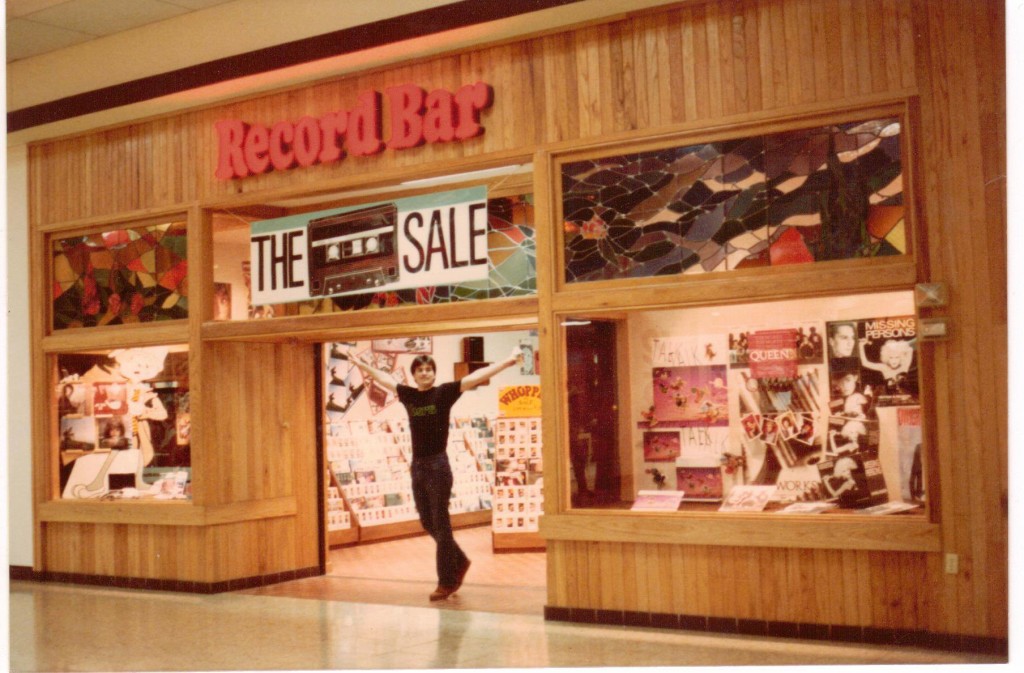
Cult of the Record Bar
Chattanooga Pulse | December 2011
A couple of months ago an obscure music website posted a story under the headline “CD-format to be abandoned by major labels by the end of 2012.” Through the power of the Internet, the just-believable-enough story — which carried no byline and quoted no sources — reverberated across the web with the power of a New York Times blockbuster, at least to the music-buying public, who are so accustomed to downloading and streaming the article seemed altogether likely.
Though not true—while growing fast, digital downloading and streaming are not expected to outpace CD sales anytime soon, with one industry executive claiming 74 percent of all albums sales this year came from CDs—the article did spark a debate among musicologists and fans: If the CD didn’t exist anymore would anyone miss it?
The same story under a different headline was written 30 years ago when Sony offered the first CD (alongside the first CD player), notes New Musical Express music writer Luke Lewis, resulting in pure profits for music labels as we rushed to replace our vinyl collections with new compact discs. The story goes back further; the same apocalypse was sounded when 8-track tapes were introduced, then cassette tapes. In the digital download/streaming era, music fans lament the loss of the CD with less fervor than the death of the vinyl record, but audiophiles have noted the deterioration in quality with each revolution in format.
But that’s another story. Lost in the debate, though not lost on the casual music buyer, is not the format but the delivery method. While the ability to instantly download or stream music cheaply, if not freely, to anyone with a decent Internet connection has been cause for celebration among music buyers, the romance of buying music, as this issue demonstrates, has not. For those born within the last 30 years, this argument will mean almost nothing. If you’ve purchased a CD in a retail store at all, chances are it was either at Best Buy or Walmart, neither of which will ever be the source of nostalgic movies starring the likes of John Cusack or Jack Black.
But for those of us who grew up in the 1970s and ‘80s, buying music meant visiting the mall. Where I grew up in Hixson, that meant Northgate, and the destination was Record Bar. There really was no other choice, at least for mainstream music fans like myself and many of my friends. Back then few of us had developed eclectic enough tastes to bother with the independent record stores, places like the Nickel Bag, which, while offering some paraphernalia of great interest to more than a few of us, reeked of what kids today might call old-school hippie music. No, what we wanted was the latest Springsteen, the new Tom Petty album, the hot Top 40 single (on 45rpm), maybe a poster, a T-shirt, one of those groovy Discwasher cleaning systems.
The Record Bar was no Championship Vinyl, the fictional record store owned by John Cusak in High Fidelity and staffed by quirky geeks with an encyclopedic knowledge of music, but for many, it was the epitome of hip (who, after all, didn’t want to work in a record store) and for some, a career (there is a Cult of the Record Bar Facebook page were former managers and employees trade memories). It was also, with the possible exception of Spencer Gifts, the coolest store in the mall, a sanctuary and a temple, a gathering place now fondly remembered as less than a retail outlet than an iconic element of the youth of a few generations.
Of course, the Record Bar wasn’t the only store in town. Freestanding music stores began popping up in the late 1970s and preferences, if not allegiances, were formed. Across Hwy. 153 from Northgate, an oasis of cool was birthed in the form of Paradise Records in what then seemed an enormous space devoted entirely to all things music. Wall-to-wall bins of albums, tapes, posters and accessories filled Paradise, along with an impressive collection of non-mainstream records that became increasingly important as our musical tastes evolved. Before the end of the ’80s, Record Bar had become Tracks, Paradise morphed into Peaches, then Cats, before the entire enterprise folded into the megastore, or the big-box outlet. Or whatever.
For me and many of my friends, the memory of the Record Bar (and Paradise, Peaches and Cats) is as strong and personal as the music we purchased there. We combed the bins together, sharing opinions, comparing notes and flaunting our (always) superior musical tastes. In the best-case scenario, we traveled in pairs (who went to the mall alone?), bought our favorites and ran home to engage in a stereophonic battle of the bands. Sure, we loved the music, but it was the records and, to a large extent, the record store that brought us together, even those of us who had nothing else in common.
I struggle to remember the last time I purchased a physical piece of music. I’ve long since liquidated my massive LP collection and largely abandoned collecting CDs. Hell, my iPod mostly sits in a drawer, uncharged and collecting dust. I listen to music in my car and stream it on my computer at work, but there’s no evidence at home that I’m the hardcore fan and collector I was even 15 years ago.
When I moved back to my hometown of Hixson this year after 30 years away and only a handful of visits in between, I was eager to visit my old stomping grounds. As I wandered into Northgate, it seemed impossibly small, nowhere near the palatial plaza I remembered. Gone were my favorite haunts—the Record Bar, Waldenbooks and (from a later age) Mr. P’s—and, like many malls, the place had a faintly decaying air as if it were hanging on just long enough for me to pay my respects. But as I made my way around the mall, I was pleasantly surprised to find For The Record—an actual record store. In the mall. In 2011. (See Page 8 for a profile.) It’s no Record Bar or, for that matter, a true indie record store, either. But the store gave me hope—for music, for malls, for everything that lives in my ever-more present nostalgia.
At 47, I’m too young to linger long in the past, but old enough to appreciate what made it worthy of nostalgia—and I’m not alone, as I’m reminded each time I mention the Record Bar on Facebook. While my taste in music has changed over the years, I’m pleased, even sentimental at the idea that a store like For the Record exists in my mall after all these years. While the Best Buys and the Walmarts still stock all the hits and more than a few misses, I doubt 30 years hence anyone will recall a memorable moment there, much less devote a Facebook page to the experience.
Update: I was wrong. Join the Cult of the Record Bar Facebook page!


